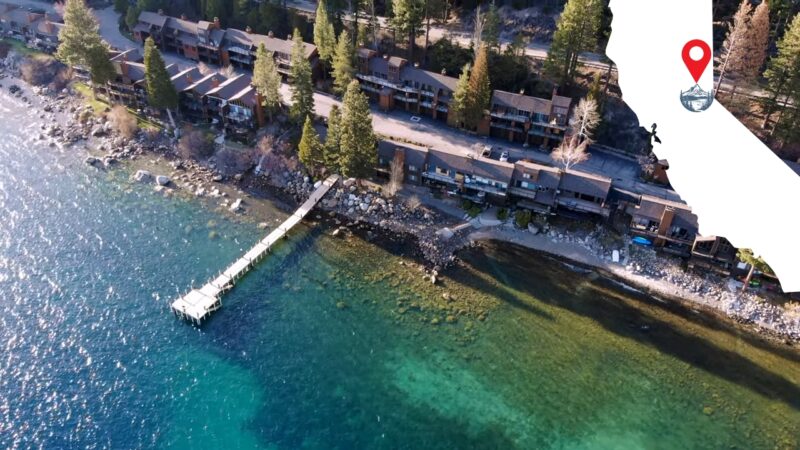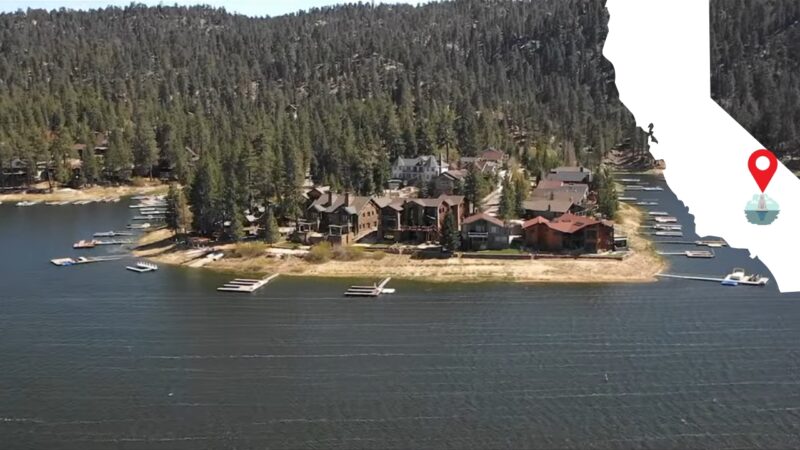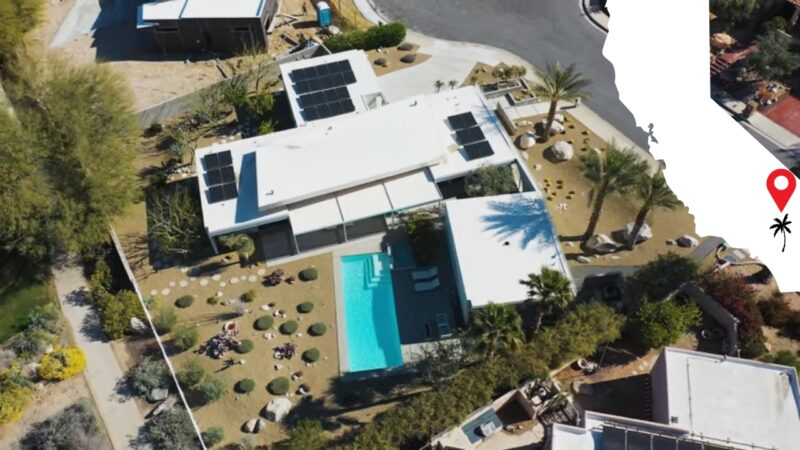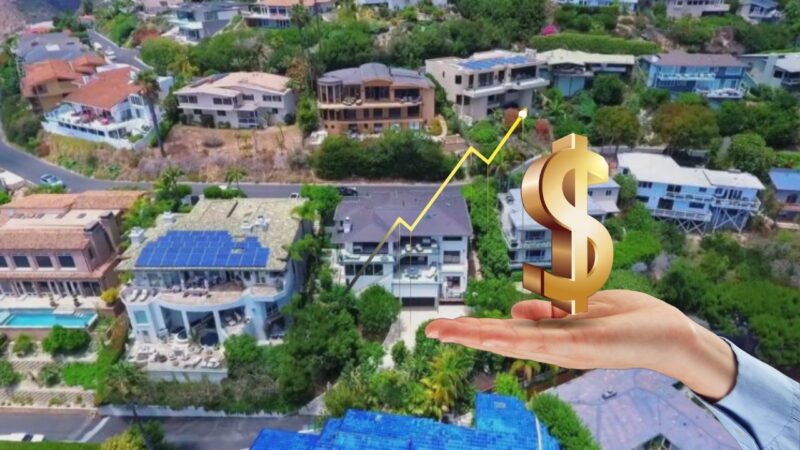Are you considering getting into the California vacation property market? Well, you’re looking at one of the most lively real estate sectors in the US. With its sunny beaches, sprawling vineyards, and snow-capped mountains, California is a dream destination for millions of tourists, but it’s also a gold mine for potential investors.
In this article, I’ll show you how you can grab a piece of this vacation property pie.
Step-By-Step Guide on How to Invest in Vacation Properties
Step 1: Do Thorough Market Research and Consider Location

First things first, let’s talk about understanding the market. California’s a big place—about 163,696 square miles, to be exact. From the misty forests of Northern California to the sun-drenched beaches of SoCal, each area has its vibe, audience, and, importantly, regulations.
Fun fact: In 2019, before the world turned upside down (COVID), California attracted over 279 million tourists. That’s almost the entire population of Indonesia vacationing in California in a single year! Imagine the demand for vacation rentals.
The following tourist destinations are the best options for investing in vacation properties:
Lake Tahoe

Known for both its winter ski season and summer lake activities, Lake Tahoe sees a consistent flow of tourists year-round. Occupancy rates for vacation rentals here can hover around 60-70%, with peak seasons seeing even higher demand.
Big Bear Lake

A favorite for Southern Californians, Big Bear offers outdoor activities throughout the year. It has a high occupancy rate, particularly during the ski season and summer months.
Napa Valley

Wine enthusiasts and casual tourists alike flock to Napa for its vineyards, fine dining, and beautiful landscapes. The region is popular for couples and small groups, with a steady demand throughout the year.
San Diego

Known for its beautiful beaches, vibrant nightlife, and family-friendly attractions like the San -Diego Zoo, this city attracts a wide range of visitors. Coastal properties, in particular, see high demand.
Palm Springs

A desert oasis known for its mid-century modern architecture, golf courses, and spas. Palm Springs sees a spike in visitors during the winter months when the weather is mild and pleasant.
Step 2: Consider Local Legislation
Some areas have strict regulations on short-term rentals. Make sure you’re not investing in a spot where you can’t legally operate. For example:
- San Francisco: The city requires hosts to register with the Office of Short-Term Rentals and limits entire home rentals to 90 days per year. Only permanent residents can host short-term rentals, putting a cap on investment properties solely used as vacation rentals.
- Santa Monica: It has one of the strictest short-term rental laws, allowing only home-sharing (the host must be present during the stay) and banning entire home rentals for less than 30 days unless they qualify as a licensed bed-and-breakfast or vacation rental.
- Los Angeles: It requires hosts to register with the city and imposes a 120-day annual limit on hosting. But, hosts can apply for extended home-sharing, which, if approved, allows for more rental days.
- San Diego: Regulations here are in flux, but recent legislation has sought to limit short-term rentals to primary residences only, capping the number of days a home can be rented out if the host is not present.
- Lake Tahoe: Regulations vary by area. In South Lake Tahoe, for example, there are caps on the total number of vacation rental permits issued and restrictions in certain residential areas to address community concerns about noise and parking.
Step 3: Financing Your Dream

Financing a vacation rental property isn’t too dissimilar from purchasing a primary residence, but there are nuances worth noting.
Here’s how you can approach each option:
Conventional Mortgages
- The Process: To secure a mortgage for a vacation rental, you’ll typically start by shopping around with various lenders—banks, credit unions, and mortgage companies. You’ll need to provide proof of income, a good credit score (usually 620 or higher for conventional loans), and a down payment.
- Vacation Rental Specifics: Lenders often view vacation rentals as higher risk than primary residences, which can influence terms. Expect to need a larger down payment (20-30%) and possibly face higher interest rates. Lenders will also look at the potential rental income the property can generate, which means you might need to provide local rental market data.
- Pro Tip: Establishing a relationship with a local bank in the property’s area can sometimes offer an edge, as they might have more flexibility and a vested interest in local investments.
Creative Financing
It refers to non-traditional methods of securing funds for real estate investments, stepping outside the conventional bank loan or cash purchase frameworks.
Here are some ideas for you:
Seller Financing
This involves the property’s seller acting as the lender, allowing you to make payments directly to them over time. It can be particularly useful if you’re unable to secure traditional financing.
The terms are negotiated between you and the seller, including interest rate, repayment schedule, and consequences of default. You’ll likely need a real estate attorney to draft the agreement, ensuring everything is legally binding and clear.
Private Money Lenders
These are individuals or private companies willing to loan money for real estate investments. Terms can vary widely, and while the interest rates might be higher than traditional loans, these lenders often focus more on the investment’s potential value and less on your credit score.
Hard Money Loans
Similar to private money lenders but typically more structured and short-term with higher interest rates. These loans are secured by the property itself and are usually used as a temporary solution until long-term financing can be secured.
Real Estate Crowdfunding
Platforms like Fundrise or RealtyMogul allow you to pool resources with other investors to finance real estate investments. This can be an accessible way to enter the market without needing the full amount for a down payment.
Step 4: Picking the Perfect Property Type

When considering investing in a vacation rental property, it’s important to think about the type of property that will attract your ideal guests and maximize your investment.
Here are some popular property types in California and what makes them appealing:
Beachfront Condos
- Location: Coastal cities like Santa Monica, San Diego, and Malibu.
- Appeal: Beachfront condos offer guests direct access to the beach and stunning ocean views, making them highly desirable for tourists looking for a beach getaway.
- Considerations: High demand means higher purchase prices. You’ll also want to consider HOA fees, which can impact your profitability.
Mountain Cabins
- Location: Areas like Lake Tahoe, Big Bear Lake, and Mammoth Lakes are hot spots for mountain cabin rentals.
- Appeal: Ideal for guests looking for a cozy retreat or outdoor adventure. Features like fireplaces, hot tubs, and proximity to ski resorts can increase appeal.
- Considerations: Seasonality can impact demand, with peaks in winter for ski season and summer for hiking and lake activities.
City Apartments
- Location: Urban centers such as San Francisco, Los Angeles, and San Diego.
- Appeal: City apartments can attract a wide range of guests, from business travelers to tourists interested in exploring California’s vibrant cities. Proximity to attractions, restaurants, and public transportation is key.
- Considerations: Competition can be fierce, and you’ll need to ensure your property stands out. Local regulations on short-term rentals in cities can be strict, so compliance is crucial.
Wine Country Estates
- Location: Regions like Napa Valley and Sonoma County.
- Appeal: These properties offer a luxurious and serene experience among some of the world’s most famous vineyards. They cater to couples, wine enthusiasts, and those looking for a high-end getaway.
- Considerations: These properties can command premium rental rates, but acquisition costs are also higher. Marketing to the right audience is essential to maintain occupancy rates.
Desert Oases
- Location: Palm Springs and Joshua Tree are prime examples.
- Appeal: Desert properties offer unique landscapes, and privacy, and often come with amenities like pools, creating a private retreat vibe. They’re popular for weekend getaways, music festival goers, and nature lovers.
- Considerations: Temperatures and seasonal demand can vary significantly. Properties with cooling pools and indoor amenities can help maintain year-round appeal.
Step 5: Managing Your Property

Once you become a proud owner, how do you plan to manage your investment?
You’ve got options:
- DIY: If you live nearby and have the time, self-managing can save you money.
- Property Management Companies: They handle everything from marketing to maintenance but will take a cut of your earnings.
- Hybrid Approach: Use a property management service for bookings and customer service, but handle maintenance and cleaning yourself.
Pro Tip: Excellent guest experiences lead to great reviews, which lead to more bookings. Whatever route you choose, ensure your guests always leave happy.
Step 6: Don’t Forget Marketing
You’re not just selling a night’s stay; you’re selling an experience. High-quality photos, a nice listing description, and prompt responses to inquiries can set you apart.
Platforms like Airbnb, Vrbo, and Booking.com expand your reach but don’t underestimate the power of your website and social media.
Step 7: Keeping Your Investment Profitable

Here’s the deal: the goal is to make money. This means keeping a close eye on your expenses (think property taxes, maintenance, utilities, and management fees) and adjusting your rental rates to match demand. Use dynamic pricing tools to optimize your rates seasonally.
Conclusion
Investing in California vacation properties can be a thrilling and profitable adventure. The state’s diverse appeal not only ensures a steady stream of guests but also offers investors a playground of opportunities to find their niche. Keep in mind, that the most successful investors blend research, financial savvy, and a touch of creativity to outshine the competition.
Remember, every successful investor started somewhere, and with the right approach, you too can build a thriving vacation rental business under the California sun. Here’s to your success, and may your new venture be as bright and promising as a California summer day!
I’m Tanner Murphy, a retired real estate agent from California, now writing for propertyescape.net. I simplify California’s complex real estate laws for readers, making it easier to understand and navigate the market.
Related Posts:
- The Pros and Cons of Investing in Real Estate Crowdfunding
- Top 8 Home Renovation Projects That Increase…
- How Much Tax Do You Pay When You Sell Your House in…
- Inheritance Tax on House - How Much Will I Pay in…
- How to Buy a House in California: All You Should Know
- The Process of Foreclosure in California: Bill of Rights







